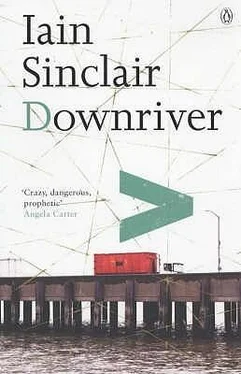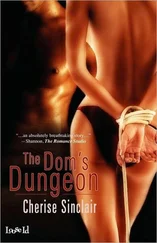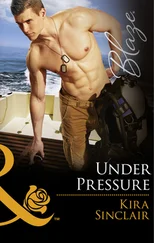We were hiding out in Imar O’Hagan’s Bow bunker: the three of us, twitchy, defensive, booze-brave — conspirators looking for a conspiracy. The world beyond these concrete walls had lost all credibility. Bad dreams were the accepted currency. Strangeness was palpable. It was hard to draw breath. I felt the mould creep from the earth floor on to the membrane of my lungs. Our hands shook, and were cold: held rigid in trays of iced water. Imar had a wild, blood-rimmed grin: something cornered and eager to bite back.
‘I’m convinced,’ said Davy, ‘we are confronted by a demonic entity, a blue-rinse succubus draining the good will of the people. That woman can’t be stopped without a stake through the heart, burial where four roads meet, a fist of garlic up the rectum. She’s a force of nature. But she’s not self-created. As Jane Harrison says, “the gods are our needs made manifest”. They describe the thing we most desire. The Widow is the focus of our own lack of imagination; the robot of our greed and ignorance. Therefore, she is indestructible.’
‘Right!’ I chipped in, ‘the culture that ignores Doug Oliver’s The Infant and the Pearl , and compels him to live in exile, gets what it deserves — nothing. We have earned the freedom to live by a more popular text, A Dominatrix’s Log. The mindless worship of our silver-skinned abbess of pain.’
Davy was lucky to be alive. (If that was still the preferred state.) He had the hunch something big — millennial palpitation, Zoa shifting — was going down in Vat City. He was set on penetrating the outer defences of the Isle of Doges, to find out what that monster was; to witness the shape of the thing, and if necessary — if that is what it cost — to celebrate his martyrdom at a time of his own choosing. He decided to go in as a civilian, a tourist. He bought his rail ticket with the regular flock of bead-worrying, St Vincent de Paul-shepherded, halt and lame at Bow Church.
The unpiloted observation truck floated down its fairground track, guided by the hand of the saints, who offered a fine scenic view of Imar O’Hagan’s Ridgeway terminal, his earth mounds and hill systems, and beyond that — the deleted catalogue of housing ‘solutions’: vertical graveyards, glass jars stacked with dishonoured ancestors. Potential pilgrims (at Devons Road, All Saints, and Poplar) were scanned by spies in bullet-proof booths, who rang their suspicions down the line to the border post, which utilized the bankrupt Billingsgate Market. These chilled fish-packing sheds were conveniently, and economically, lit by the vaporous glow of radon daughters, fluorescent waste products with a half-life of a thousand years.
Davy’s train halted under the Vat City symbol: an Atlantean cross within the wobbling tonsil of the Island. The pilgrims were on their knees, muttering about sins of omission and emission, guilty desires, furtive and transitory pleasures: they were ready to wipe the slate clean and to dive, with renewed vigour, into the same old quagmire. The crippled outbid each other in deformity. The amputee demanded precedence over the slightly rickety. A torso on wheels was bathed in an aggressive nimbus of sanctity that followed him like the beam of a searchlight. The shadowy minders kept their heads down, sighing with all the concentrated apathy of bingo players. No time was wasted. A pre-recorded absolution, triggered by an electronic eye, was broadcast as the truck moved over the final bridge. But, if the others were soon cleansed of their sins, Davy was the goat among sheep: the necessary sacrifice by which the faithful obtained grace.
Swiss Guards, holding back snarling Rottweiler dogs, frisked Davy for membership cards from masonic lodges, the Diners Club, Opus Dei. They found nothing but a lapsed ICA season ticket. They dragged him from the train to the fence, and swung him out by the wrists and the ankles. He was flying: a skeleton forest of scarlet and nightblue cranes, sunlight strafing the buildings, a skullcap of unblemished sky. Then, pedalling furiously, he fell ninety feet into the dock below. Bruised, choked, spluttering; he paddled to shore, and crawled back to the bunker. A failed suicide. We would have to plan our next assault with much greater care.
‘They’re incubating the Antichrist!’ Imar burbled. ‘Everything you report proves it. This is an age of fraudulent dystopias. Some bleak Nova Atlantis replaces the possibility of a City of the Sun . They’ve turned from the rule of a Philosopher King to the power plays of a mad voodoo priest.’
‘True,’ Davy nodded, spinning on his heel, excited by these images of cosmic alienation. ‘They’ve laid down an apparently impenetrable mental grid. They’ve protected themselves with an actively malign geometry of earth and water: formal canals, fire-towers, black glass temples. The street itself has become an outmoded concept. “Street Cred” is something to be sucked up by a vacuum cleaner. You can see it all from the first bridge. I glimpsed it as I fell — vast avenues, empty, unpeopled. All movement is mechanical, zombie-urgent, other-directed.’
‘And you still want to find a way into this madness? And, worse, to drag us along for the ride?’ I said. I had the obstinate conviction this was not one of Davy’s better ideas.
‘Of course!’ he howled, ‘don’t you want to be there when it happens? Don’t you want to be the first outsider into Pivot City? The business of the Island is hidden from sight. The action is all under the ground. It just needs a firm hand to spin the buildings and bring these blood-matted cellars up into the light.’
Reluctantly, I agreed. I looked on swift annihilation as the simplest solution. I slumped on my chair in an abject spirit of self-accusation, convinced that everything that had happened was a consequence of my casual invocation of the Vessels of Wrath. I knew what the Isle of Dogs meant. An unlucky place, anathematized by Pepys; and identified by William Blake with the Dogs of Leutha, whose only purpose was to destroy their masters. Even the nineteenth-century maps register a desert occupied by three houses: Folly, Chapel, Ferry (Insanity, Prayer, Escape). The island has always been shunned or exploited for its dark potential. (‘ Till he came to old Stratford, & thence to Stepney & the Isle / Of Leutha’s Dogs, thence thro’ the narrows of the River’s side, / And saw every minute particular: the jewels of Albion running down / The kennels of the streets & lanes as if they were abhorr’d …’)
Imar laughed aloud, intoxicated with glory, a kamikaze pilot, clapping his hands at the prospect of the biggest buzz of them all: straight into the dock at a million miles an hour.
We each in our own way submitted as Davy outlined his brain-fried plans on a squeaky blackboard. Vat City, it appeared, was protected by a chain of deepwater docks. They looked in Davy’s diagram, set down within the lingam of the Island, like the symbol of a new religion, a triple-barred cross metamorphosing into a football rattle, in honour of the rabid ghosts of Millwall. The West India Docks had been rebaptized. The blunt tip of Davy’s chalk scratched in the new names: Maggiore, Lugano, Como .
Water, according to Davy, would be our only way in. The major custom barriers at West Ferry and Prestons Road effectively sealed the Island. This was too narrow a track to breach. Tight valves controlled the passage of blood to the heart. Justice was summary for detected aliens — with the bridge jump as the softest option. And the railhead was even more fiercely scrutinized. Journalists and freelance couriers of samizdat literature found themselves doing a twelve stretch in one of the Island’s custodial monasteries. Bread, rainwater, and prayer: endless repetitions of the Holy Names. They became generators of a spiritual force to be tapped by the Council of Elders. An unnatural resource, a privatized power station.
Читать дальше












